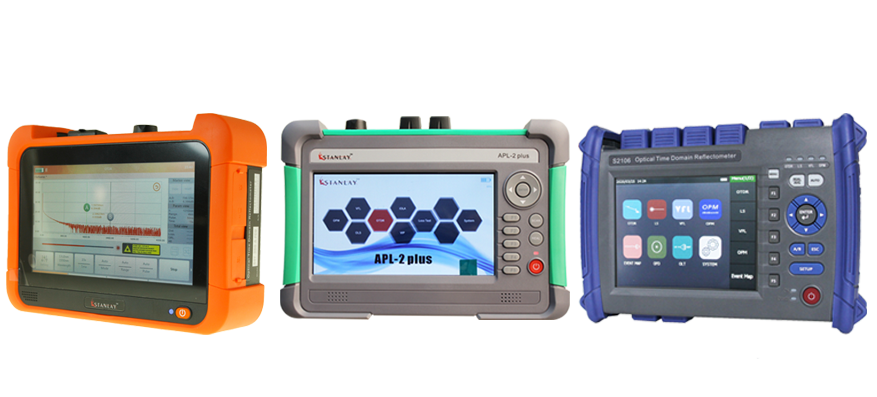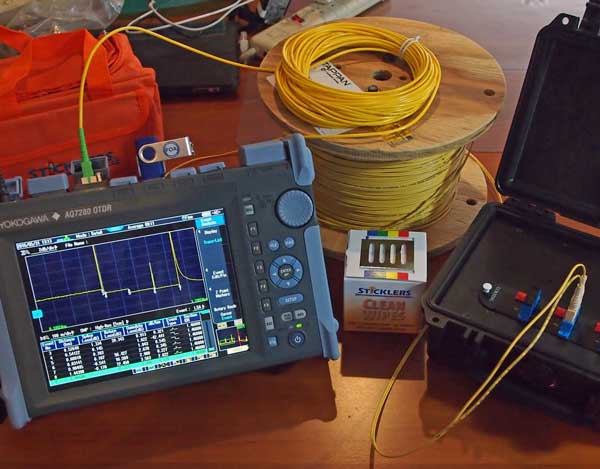Main reasons for integrating an optical measurement system into modern manufacturing
Wiki Article
Recognizing How an Optical Measurement System Improves Accuracy in Industrial Applications
Optical measurement systems play an important role in improving precision across various industrial applications. By leveraging innovative modern technologies such as laser interferometry and 3D imaging sensing units, these systems use high-resolution, non-contact measurements. This capacity decreases the danger of damaging delicate elements while guaranteeing accuracy. The influence of these systems prolongs beyond mere measurements. Exploring their benefits, applications, and future patterns exposes a complex landscape of advancement and challenges that benefits closer examination.The Basics of Optical Measurement Systems
Optical measurement systems act as vital devices in different industrial applications, giving specific data collection and analysis. These systems utilize light as a primary means of measurement, leveraging optical concepts to analyze dimensions, positions, and surface features of things. They integrate components such as lasers, electronic cameras, and sensors, which collaborate to catch high-resolution photos and data.The technology allows non-contact dimensions, minimizing the risk of damaging delicate elements. Optical measurement systems are versatile, locating energy in quality assurance, setting up verification, and dimensional analysis throughout various industries. They are particularly efficient in environments where typical measurement methods may fail, such as gauging complex geometries or observing fast movements.
As industries remain to evolve, the assimilation of optical measurement systems will certainly stay crucial for guaranteeing accuracy and effectiveness, eventually boosting item top quality and functional efficiency in numerous manufacturing procedures.
Secret Technologies Behind Optical Measurement
Key innovations such as laser interferometry strategies and 3D imaging sensors play an essential role in the performance of optical measurement systems (fibre testing equipment). These modern technologies make it possible for precise measurements and detailed evaluation in various commercial applications. Understanding their functionalities is crucial for using the complete potential of optical measurement systemsLaser Interferometry Techniques
Many laser interferometry techniques have revolutionized the field of optical measurement, using unprecedented precision and accuracy in numerous industrial applications. These methods make use of the interference of systematic light waves to determine distance, variation, and surface irregularities with nanometer-level accuracy. Typical approaches include Michelson interferometry, which divides a beam of light of light and assesses phase shifts, and Fabry-Pérot interferometry, known for its high resolution in measuring little modifications. In addition, laser Doppler interferometry utilizes regularity changes to assess rate, making it invaluable in vibrant measurements. The versatility of these methods permits their combination into varied manufacturing processes, enhancing quality assurance and guaranteeing adherence to strict resistances. Because of this, laser interferometry proceeds to play a vital function in advancing industrial measurement requirements.3D Imaging Sensors
Innovations in measurement technology have actually brought about the development of 3D imaging sensors, which play a significant role in optical measurement systems. These sensing units record three-dimensional data with numerous techniques such as triangulation, time-of-flight, and structured light. By properly rebuilding the shape and dimensions of objects, 3D imaging sensors enhance the accuracy of measurements in industrial applications. They supply real-time comments, facilitating quality assurance and making sure that parts meet rigorous specifications. Additionally, their ability to run in tough environments, such as differing illumination conditions, makes them important in making processes. As industries increasingly embrace automation, the integration of 3D imaging sensing units into optical measurement systems is anticipated to drive further improvements in efficiency and precision.Benefits of Optical Measurement in Sector
Typical measurement techniques have actually long been the requirement in commercial settings, optical measurement systems use substantial benefits that boost precision and performance. These systems use light to record data, leading to high-resolution dimensions that are frequently unattainable with conventional techniques. The non-contact nature of optical dimensions decreases the risk of damaging delicate parts during the analysis procedure. Furthermore, the speed of optical dimensions enables fast data acquisition, helping with timely decision-making in fast-paced commercial atmospheres.Optical systems are adaptable, with the ability of determining various materials and forms without the need for extensive recalibration. This flexibility contributes to boosted operations and efficiency. The automation capacity of optical measurement systems minimizes human mistake, guaranteeing constant top quality control. Generally, the assimilation of optical measurement modern technology stands for a modern change towards enhanced accuracy and integrity in industrial procedures, ultimately leading to boosted product quality and operational efficiency.
Applications of Optical Measurement Systems

Optical measurement systems play a crucial function in enhancing manufacturing procedure optimization by offering specific data for decision-making. These systems ensure high quality control assurance with real-time monitoring and analysis of production metrics. As industries progressively adopt these innovations, their effect on efficiency and item reliability ends up being noticeable.
Manufacturing Refine Optimization
Enhancing production process efficiency is progressively reliant on the assimilation of optical measurement systems. These systems give real-time information on numerous criteria, permitting suppliers to evaluate processes with a high level of precision. By making it possible for precise dimensions of measurements, surface area characteristics, and product homes, optical measurement systems assist in the identification of ineffectiveness and bottlenecks in manufacturing lines. The instant responses from these systems equips engineers to make informed decisions, causing optimized machining, setting up, and completing processes. Additionally, the ability to keep track of problems constantly permits flexible modifications, minimizing downtime and waste. As markets go for better performance and lowered functional prices, optical measurement systems become critical devices for boosting production process optimization.
Quality Assurance Guarantee
The integration of optical measurement systems greatly effects quality assurance guarantee in industrial settings. These systems give specific and non-destructive dimensions, enabling producers to spot flaws and discrepancies early in the manufacturing procedure. By using innovative imaging methods, such as laser triangulation and interferometry, optical measurement systems ensure that parts satisfy rigorous specifications. This facilitates real-time surveillance, minimizing waste and lessening the risk of damaged products reaching the market. Furthermore, the information accumulated can be analyzed to refine production procedures further, causing constant renovation. Ultimately, the fostering of optical measurement systems improves dependability and uniformity in quality assurance, promoting better confidence among stakeholders and consumers alike in the final products delivered.Case Studies: Successful Executions
Various markets have efficiently incorporated optical measurement systems to boost their operational efficiency and item high quality. In the vehicle field, a prominent manufacturer took on a laser triangulation system to monitor the positioning of automobile components. This application considerably reduced assembly errors, causing enhanced safety and security and lowered prices.In the aerospace sector, a leading airplane manufacturer utilized optical metrology for accuracy dimensions of generator blades, attaining a decrease in making resistances and far better efficiency requirements.
A customer electronics company implemented optical measurement modern technology throughout the production of smartphone displays, resulting in boosted high quality control and a decrease in defective items.
These study highlight exactly how optical measurement systems not only improve precision however also add to overall functional efficiency, demonstrating their worth across numerous markets. By dealing with specific requirements, these systems have confirmed to be crucial tools in modern-day industrial applications.
Obstacles and Limitations of Optical Measurement
While optical measurement systems use significant benefits in various industrial applications, they are not without their obstacles and restrictions. One significant issue is level of sensitivity to environmental problems, such as temperature level changes, moisture, and dust, which can negatively affect measurement accuracy. In addition, optical systems frequently call for precise positioning and calibration, making them at risk to human error throughout arrangement and operation. One more constraint is the potential for interference from ambient light, which can misshape dimensions and necessitate complicated filtering system strategies. Specific products and surface areas might offer difficulties, as reflective or transparent qualities can lead to inconsistent analyses. The expense of high-quality optical components and systems can also be a barrier for some markets, limiting extensive adoption. Specialized training is often needed for employees to properly run and preserve these systems, including to the general complexity and operational obstacles.Future Trends in Optical Measurement Innovation
As advancements in modern technology remain to shape commercial processes, the future of optical measurement systems is positioned for substantial advancement. Arising trends indicate a change in the direction of improved assimilation of artificial knowledge and artificial intelligence, making it possible for systems to assess information in real-time, determine patterns, and improve decision-making procedures. Additionally, the growth of miniaturized sensing units and advanced optics is anticipated to cause more portable and flexible measurement solutions, making them obtainable for a broader range of applications.Additionally, the consolidation of 3D imaging and high-resolution capacities will enable extraordinary accuracy in measurements, which is crucial for industries such as aerospace and automobile. The press for automation and Industry 4.0 will likewise drive the need for optical measurement systems that can conveniently user interface with other innovations. As these patterns optical fibre diameter analyser unravel, optical measurement systems will likely come to be integral to accomplishing higher performance and accuracy throughout numerous industrial sectors.

Frequently Asked Inquiries
Exactly How Do Optical Measurement Systems Compare to Typical Measurement Techniques?
Optical measurement systems offer higher accuracy and rate contrasted to standard methods - optical fibre diameter analyser. They reduce human mistake, improve information collection efficiency, and give real-time results, making them significantly preferred in different commercial applications for accurate dimensionsWhat Industries Benefit one of the most From Optical Measurement Systems?
Optical measurement systems greatly benefit sectors such as aerospace, automobile, and electronic devices. Their ability to offer high-precision dimensions boosts high quality control, minimizes manufacturing errors, and enhances total performance, making them vital in affordable production environments.Can Optical Measurement Systems Be Personalized for Certain Applications?
Optical measurement systems can indeed be customized for certain applications. By readjusting criteria such as wavelength, resolution, and calibration techniques, industries can tailor these systems to satisfy special accuracy and precision needs effectively.What Is the Maintenance Requirement for Optical Measurement Systems?
The maintenance requirements for optical measurement systems usually consist of routine calibration, cleansing of optical elements, and software program updates. Complying with these practices guarantees precision, dependability, and longevity of the measurement equipment in numerous applications.Just How Do Environmental Aspects Affect Optical Measurement Precision?
Ecological elements, such as temperature changes, humidity, and dust, significantly impact optical measurement accuracy. These aspects can misshape light paths and interfere with sensor analyses, inevitably endangering the dependability and precision of measurements in commercial setups.Report this wiki page